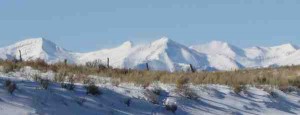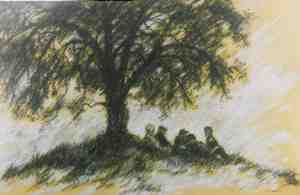Review by Martha Quillen
Recreation – February 2008 – Colorado Central Magazine
Thrillcraft – The Environmental Consequences of Motorized Recreation
Edited by George Wuerthner
Published by the Foundation for Deep Ecology in 2007
ISBN: 1933392665
THIS BOOK IS AN ASSAULT; a polemic; a long, angry, unreasonable tirade against motorized recreation, that is designed, according to the book’s introduction, to make readers “enraged and engaged.”
In the book’s forward, Douglas Tompkins, the founder and president of the Foundation for Deep Ecology and the Conservation Land Trust, asserts that there is “no reason to tiptoe around the issue or soften the language.” This is “slob recreation.”
Tompkins maintains that “thrillcraft users are the true eco-terrorists.” As he sees it, they destroy our land, disturb the peace, litter, trespass, emit pollutants, camp and hike in unauthorized places, and thus we must stop them. In conclusion Tompkins asks, “Will we be true patriots, or cowards, who turn away from the looting of our natural heritage?”
The fury displayed in Thrillcraft is colossal, over-the-top, clearly unfair, and sometimes even laughable. In essence, this book declares war on the machine — and its operators. In a series of pictures at the back of the book, a gorgeous photo of a man cross-country skiing with three dogs is labeled as “PRISTINE” in huge capital letters, a picture of people rafting as “COOPERATIVE,” and a picture of a kayaker as “RESPECTFUL.” In contrast, snowmobilers are labeled as “POLLUTING” and “CARELESS,” and jetskiers as “RECKLESS” and “SELF-CENTERED.”
Obviously, dogs and people in the wilderness are not necessarily “pristine,” or “thoughtful,” or “reflective,” as Thrillcraft would have it. And mountain bikes are not as innocuous as this book would suggest; in fact they’re not only fully capable, but also highly culpable, in damaging Castle Gardens and the Greens Creek area.
And whether hikers and mountain bikers are non-polluting, depends entirely on how they arrived at the trail (and everyone who lives here knows that many of them arrive pulling giant trailers hooked to behemoth, gas-guzzling 4x4s, which they regularly drive for work and play).
Furthermore, it seems unlikely that a five-and- one-quarter pound coffee-table book printed in China is the solution to America’s ecology problems.
But with that said, it seems even more unlikely that throwing this book into a Dumpster is a solution to our problems, either.
OH, YES, IT’S A RUDE, crude, immoderate rant of a book. But the illustrations are dazzling and sure to strike a chord with anyone who’s ever been irate about inconsiderate drivers, torn-up trails, mucked-up wetlands, noisy four-wheelers, hazardous jetskiers, and those huge herds of snowmobiles, ATVs, ORVs, motorbikes, and jeeps one encounters in the great outdoors.
This book is also ridiculously self-righteous. The truth is, many of the recreational pastimes Thrillcraft’s editors praise are as ecologically questionable as the ones they condemn. Mountain bikes tear up trails and countryside, too. Hikers disturb wildlife. Subdivisions destroy habitat.
In recent years, we’ve been loving the great outdoors to death. Too many campers, hikers, climbers, cyclists, rafters, kayakers, fishermen, skiers, sight-seers, and picnickers are damaging our backcountry just as surely as inconsiderate ATVers gleefully spinning wheelies on muddy tracks.
And yet, some of the writing in Thrillcraft is excellent, and the stats and facts included should be discussed. The text includes essays by numerous people, including authors, naturalists, foresters, conservationists, political activists, an economist, an associate professor of history, a philosophy professor…. There are selections from well-known environmental writers: Rick Bass, James Howard Kunstler, Richard Mahler, Tom Butler, and more.
There’s a lot to like in this book. And the pictures are great. When it come to our need to treat our environment better, nothing is more convincing than Thrillcraft’s pictures of ravaged landscapes, beleaguered wildlife, and hordes of ORVs.
But one wonders if this book is more calculated to help or hurt the situation.
Personally, I despise the sort of sort of abusive, name-calling attacks Thrillcraft’s creators indulge in (with their headlines, cutlines, and side comments). Their attitude is simplistic, hyperbolic and fanatical.
ONCE UPON A TIME, exploitation defiled America’s mountains, forests, streams and wildlife. We had problems due to hunting animals into extinction; pouring sewage into our rivers; befouling our air; dumping our mine waste into rivers and valleys; clear-cutting; and the like. Our problems, however, weren’t due to any single segment of society; they were due to how Americans went about obtaining their food and building materials.
Now, a lot of our problems are due to development, sprawl, and the popularity of rural living. In the West, we’re criss-crossing our countryside with roads, building houses in wildlife habitat, introducing non- native plants and animals, and suppressing forest fires in order to protect property — and thereby almost guaranteeing that our future will include California-style fiery conflagrations.
Pretending that ORVs are nature’s biggest problem, is ludicrous. Motorized recreational vehicles are merely a tiny part of a much bigger threat: Americans tend to be materialistic; we buy a lot of goods, we use a lot of gas, we build a lot of square footage, we waste a lot of food.
And perhaps more to the point, workable solutions to America’s problems will require cooperation by all of us, and yet we don’t tend to be cooperative.
In the end, Thrillcraft’s mean-spirited viewpoint may actually make matters worse, by dividing people further and thereby making everyone more resistant to change. And even more disturbing, the book ignores the fact that all of us need to do better.
That’s what bothers me most about Thrillcraft. It’s editors don’t seem to recognize the bigger problems that RVs are merely part and parcel of.
Also, Thrillcraft’s ecology- minded editors fail to see that those machines they hate so much could become part of the solution. Why are we using them to tear up meadows? Why aren’t ATVs and motorbikes, which use comparatively little fuel, being used to shop? Commute to work? And replace full-size, gas-guzzling, pollution-spewing vehicles in our cities? Why can’t we put all those annoying vehicles to work doing something useful? And why aren’t we equipping motorcycles and ATVs with better mufflers?
With their bombastic ardor, Thrillcraft’s editors condemn motorized recreation, ATV rallies, dirt tracks and the like near cities. But isn’t that where they should be? Shouldn’t we be putting hiking trails, bicycle trails, picnic areas, and motorbike courses near cities so that people and their pets don’t have to travel out to the hinterlands to recreate?
All in all, I wish Thrillcraft had taken a less incendiary stance. Although I think it entirely right and fair to condemn reckless recreation, it’s wrong to assume that everyone with a snowmobile or ATV is reckless and that everyone else is innocent (including those who have planted their second homes firmly in the middle of wildlife corridors so that they can commute hundreds of miles on weekends to stoll through their neighborhoods watching deer and elk lumbering around).


